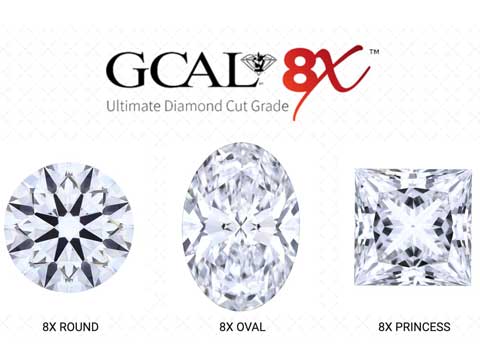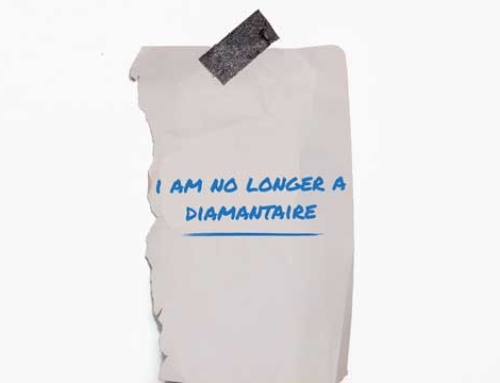Image: GCAL 8X – www.gcalusa.com
Gem Certification & Assurance Lab (GCAL) has expanded its GCAL 8X cut grade to include ovals and princess cuts.
Last year, the lab introduced the GCAL 8X cut grade—given to diamonds that show “precision diamond cutting.” Diamonds that receive the GCAL 8X designation have to be judged “excellent” on eight factors: polish, external symmetry, proportions, optimal brilliance, fire, scintillation, optical symmetry, and shape aesthetics (for fancy shapes).
Chief operating officer Angelo Palmieri says the GCAL 8X certificates aim to bring higher standards as well as greater “transparency” to grading of fancy cut diamonds.
“One of the observable things that takes place with fancy cuts is that a manufacturer shoots for excellent polish—which has nothing to do with basic cut quality—and excellent external symmetry, and that’s it,” he says. “And so you have an excellent-excellent fancy, which is touted to be top of the line, but can have outrageous proportions.”
GCAL director of sales and marketing Steve Feldman says that “with fancy shape diamonds, it’s been like the Wild West. No one has a real definition of what a well-cut fancy shape diamond is. It’s almost crazy. We have created a new standard in fancy shape diamonds. It’s never been done before.”
Palmieri says the GCAL 8X criteria are calculated by looking at which diamonds perform best and then working backward.
“We are not starting with a data set that says, ‘We want a 55% table,’ ” he says. “We are starting with a data set of ultimate performance and then mining the data to find what proportion sets, what characteristics, what physical specifications of the diamonds, will create that.”
When determining how to assess ovals, the 8X criteria aims to eliminate “the bow tie,” the black areas in the diamond that form underneath the table, Palmieri says.
‘When you look on the internet, the biggest problem with an oval is a ‘bow tie,’ because of its elongated shape,” he says. “If a stone does not have a minimal bow tie, it will not be certified as GCAL 8X.”
For oval cuts, the 8X specs are table percentage: 56%–62%; depth percentage: 59%–63.5%; crown angle: 33.5°–36.5°; crown height: 12%–16%; pavilion angle: 39.6°–41.4°; length-to-width ratio: 1.35–1.55; girdle thickness: thin to very thick, faceted; and culet size: none to very small.
For princess cuts, the 8X specs are table percentage: 63%–70%; depth percentage: 66%–74%; crown height: 10%–15%; pavilion angle: 57°–65°; pavilion angle 2: 36°–40°; pavilion angle difference: 20°–28°; length-to-width ratio: 1–1.015; girdle thickness: thin to thick; and culet size: none to very small.
GCAL says it plans to introduce 8X grades for other fancy cuts, including cushions and radiants.
So far, lab-grown sellers have embraced the GCAL 8X grade more than natural diamond sellers.
“People are carrying significant amounts of 8X inventory in lab-grown,” Palmieri says. “In natural, because of the high price of rough, people are cutting them to order.”







